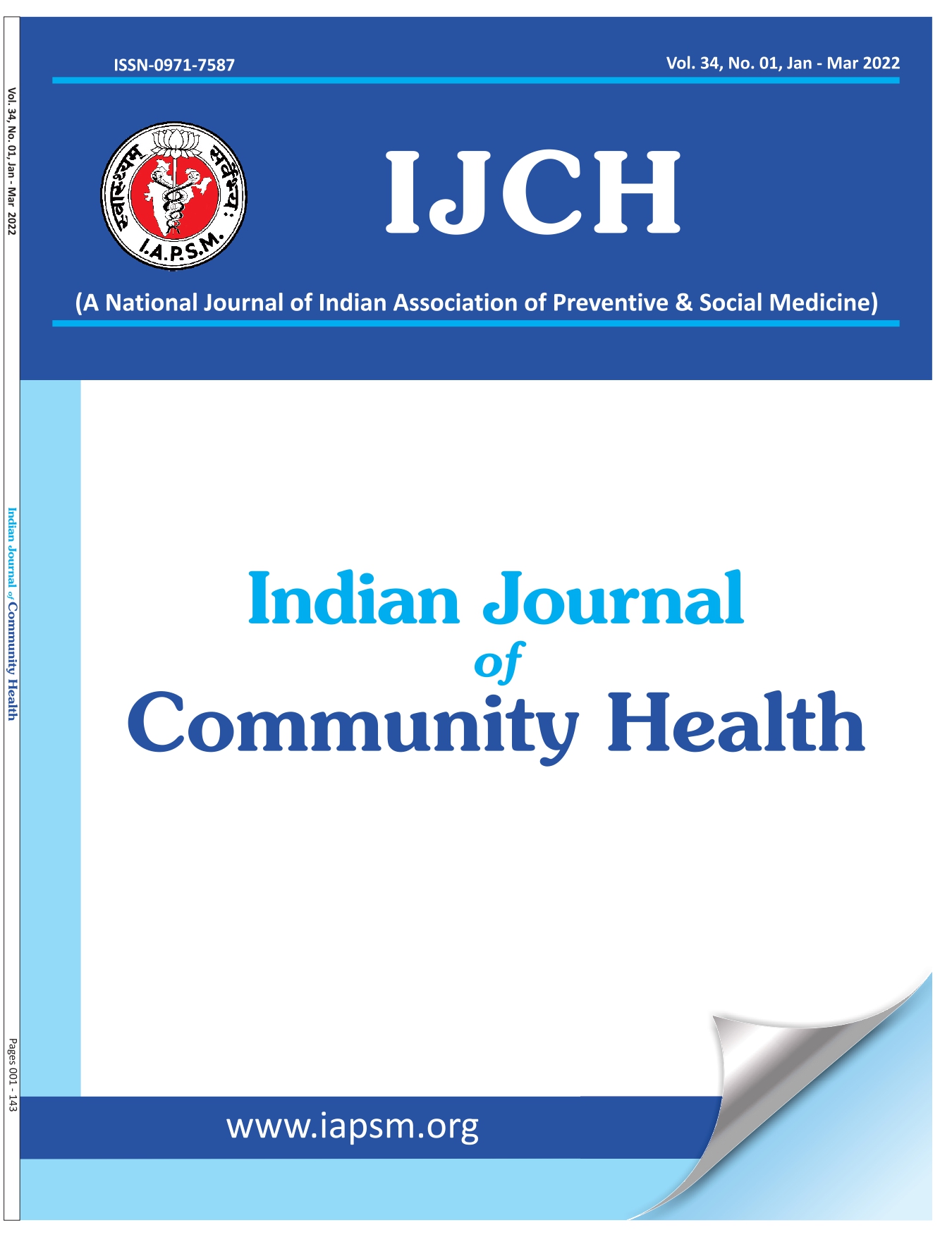E-learning in medical education: students’ experience, challenges and perspectives: a cross-sectional study in India
DOI:
https://doi.org/10.47203/IJCH.2021.v33i04.007Keywords:
COVID-19 pandemic, E-learning, Online learning, Education, StudentsAbstract
Background: Due to COVID-19 pandemic, online classes were initiated in medical colleges for continuation of learning. Methods: A cross-sectional study was conducted among 537 undergraduate medical students in an Indian medical college using Google forms. The questionnaire contained sections on students’ online or e-learning experience and role of instructor in enhancing it; challenges and further scope of improved implementation of e-learning. Statistical analysis included descriptive statistics. SPSS 23 was used for data analysis. RESULTS: Among study participants, (46.7%) regularly joined e-classes on time. Prior scheduling of classes (88.6%) and sharing of study material in e-learning application (84%) by teachers/instructors; interactive discussion with teachers (71.1%) and their response to students’ queries through e-learning application (77%) facilitated learning among participants. For (42.6%) e-learning represented considerable challenge in acquiring clinical medical skills. Theory lectures were found suitable for learning by e-learning mode while clinical case discussions were not preferred. Conclusion: E-classes had some definite advantages; however, undergraduate medical students preferred blended approach as e-learning represented a challenge for learning clinical medical skills. Instructors were found to have definite role in enhancing e-learning experience. Providing solutions to barriers like poor internet connectivity and resolution of technical glitches are essential for improved implementation of e-learning.
Downloads
References
World Health Organization. WHO announces COVID-19 outbreak a pandemic, 2020. Available at: https://www.euro.who.int/en/health-topics/health-emergencies/coronavirus-covid-19-outbreak-a-pandemic#text=The%20meeting%20follows%20the%20announcement. Accessed on13/12/2021.
Ward JP, Gordon J, Field MJ, Lehmann HP. Communication and information technology in medical education. Lancet. 2001;357: 792–96.
Raosoft Inc. (2004) RaoSoft® sample size calculator. Available from http://www.raosoft.com/ samplesize.html.Accessed on 20/05/20.
Abdullah F, Ward R. Developing a General Extended Technology Acceptance Model for E-learning (GETAMEL) by analyzing commonly used external factors. Computers Hum Behav.2016;56:238-56.
Zhang D, Zhao JL, Zhou L, Nunamaker Jr JF. Can e-learning replace classroom learning? Commun ACM. 2004;47(5):75-9.
ICMR. National Guidelines for Ethics Committees Reviewing Biomedical and Health Research, 2020. India: Indian Council of Medical Research. Available at: https://www.icmr.gov.in/pdf/covid/techdoc/EC_Guidance_COVID19_06052020.pdf. Accessed on 10/12/2021.
Albarrak A. Education in a technological world: Communicating current and emerging research and technological efforts [Internet]. 1st ed. Formatex Research Centre; 2011. http://www.formatex.info/ict/book/147-153.pdf
Hammarlund, C. S., Nilsson, M. H., &Gummesson, C. External and internal factors influencing self-directed online learning of physiotherapy undergraduate students in Sweden: a qualitative study. Journal of educational evaluation for health professions, 2015;12, 33. https://doi.org/10.3352/jeehp.2015.12.33
Pei L, Wu H. Does online learning work better than offline learning in undergraduate medical education? A systematic review and meta-analysis. Medical Education Online. 2019, 24:1, 1666538
Al-Balas M, Al-Balas HI, Jaber HM, Obeidet K, Al-Balas H, Aborajooh EA, et al. Distance learning in clinical medical education amid COVID-19 pandemic in Jordan: current situation, challenges, and perspectives. BMC Med Edu. 2020; 20 (341):1-7
Moravec M, Williams A, Aguilar-Roca N, O’Dowd DK. Learn before lecture: A strategy that improves learning outcomes in a large introductory biology class. CBE Life Sci Educ. 2019;9(4):473-81
Upreet D. Absenteeism and under-achievement in final year medical students. Nat Med J India. 2003; 16:34-7.
Hamdi A. Effects of lecture absenteeism on Pharmacology course in medical students. J Int Assoc Med Sci Educat. 2006:16:27-30.
Lawande NN, Kenkre TD, Mendes NA, Dias LM, Dias AS. Perspectives of Indian medical students on e-learning as a tool for medical education in the country: a quantitative study. Int J Community Med Public Health 2020; 7:3610-6.
Muilenburg, Lin.Y, and Berge, Zane.L. Student barriers to online learning: a factor analytic study. Journal of distance education.2005,26(1):29-48
Steinert Y, Snell LS. Interactive Lecturing: strategies for increasing participation in large group presentations. Med Teach. 1999;21: 37-42.
Begum J, Ali SI, Panda M. Introduction of Interactive Teaching for Undergraduate Students in Community Medicine. Indian J Community Med. 2020;45(1):72-6.
Ruiz JG, Mintzer MJ, Leipzig RM. The impact of E-learning in medical education. Acad. Med. 2006 Mar;81(3):207-12.
Valdez G, Fulton K, Glenn A, Wimmer NA, Blomeyer R. Effective technology integration in teacher education: a comparative study of six programs. Innovat J Online Educ. 2004: 1(1)
El-Seoud S, Taj-Eddin I, Mohamed M. Motivation in e-learning: How Do We Keep Learners Motivated in an E-learning Environment? Int J Learning and Teaching. 2016 Jun;2(1):63-66
Lakbala P. Barriers in implementing E-learning in Hormozgan University of Medical sciences. Glob J Health Sci. 2016:8(7):83-92.
O’doherty D, Dromey M, Lougheed J, Hannigan A, Last J, McGrath D. Barriers and solutions to online learning in medical education-an integrative review. BMC Med Educ. 2018; 18:130. https://doi.org/10.1186/s12909-018-1240-0.
Uma V.2014. Use of Online Databases by faculty and research scholars at university of Hyderabad (UOH) and Osmania University (OU): a survey. Available at: https://www.researchgate.net/publication/279205744_Use_Of_Online_Databases_by_Faculty_and_Research_Scholars_at_University_of_Hyderabad_UOH_and_Osmania_University_OU_A_Survey. Accessed on 21/12/2021
Downloads
Published
How to Cite
License
Copyright (c) 2021 Indian Journal of Community Health

This work is licensed under a Creative Commons Attribution-NonCommercial-NoDerivatives 4.0 International License.





